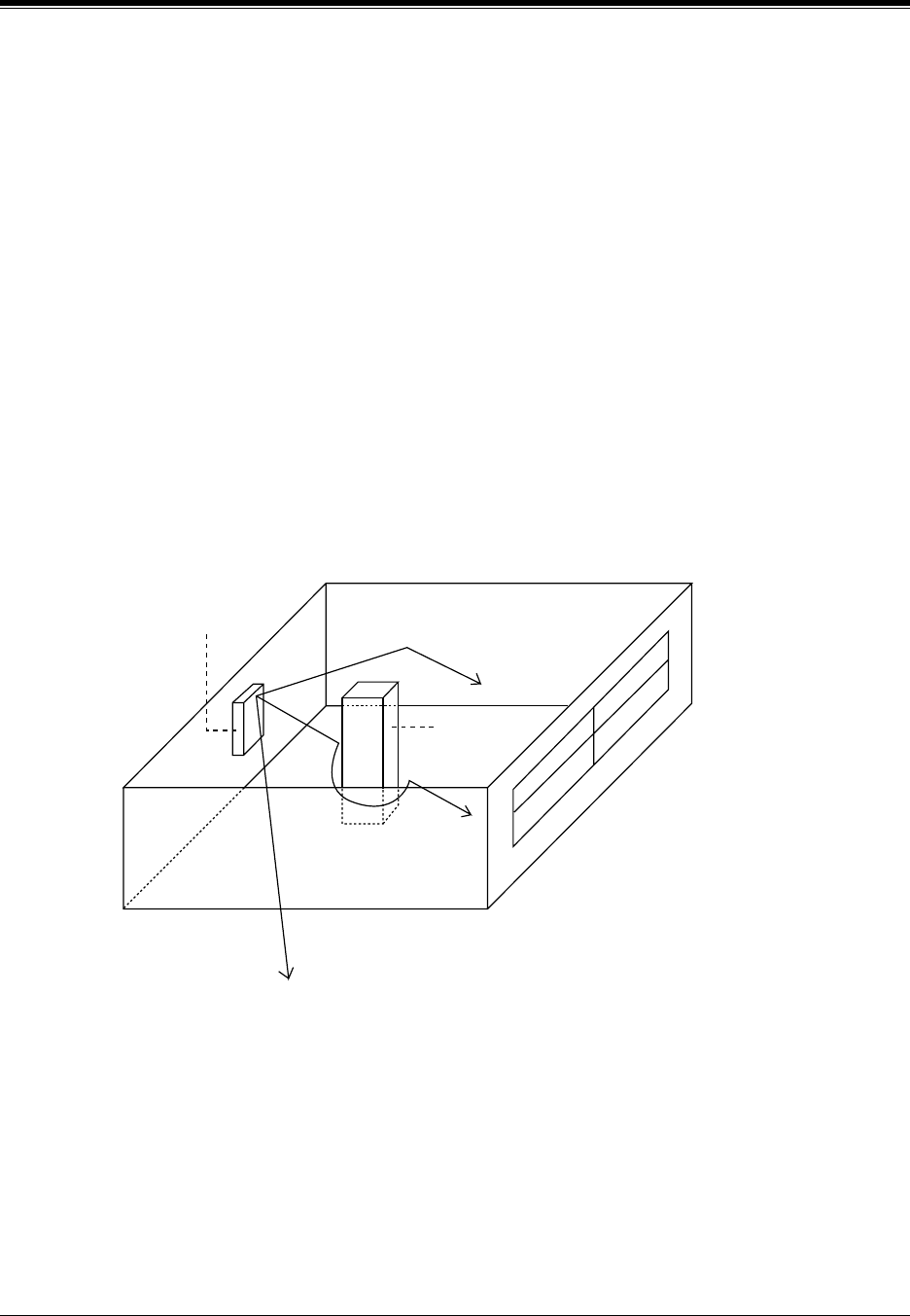
5.2 Wireless System Installation
DECT Installation
151
5.2 Wireless System Installation
5.2.1 Site Planning
Choosing the best site for the Cell Station (KX-TD142) requires careful planning and testing
of essential areas. The best location may not always be convenient for installation. Please read
the following information before you install the unit.
Characteristics of Radio Waves
The transmission of radio waves and the operating range depend on the structure and materials
of the building.
Office equipment, such as computers and fax machines, can interfere with radio waves.
Such equipment may create noise or interfere with the performance of the portable station.
The illustration below shows the special transmitting patterns of radio waves.
1. Radio waves are reflected by objects such as those made of metal.
2. Radio waves are diffracted by objects such as metallic columns.
3. Radio waves penetrate objects such as those made of glass.
The Relationship between Radio Waves and Building Structure and Materials
• The transmitting range is affected more by the building materials and thickness of the
material than the number of obstacles.
• Radio waves tend to be reflected or diffracted by conductive objects and rarely penetrate
them.
• Radio waves tend to penetrate insulated objects and are rarely reflected by them.
• Radio waves penetrate thin objects more than thick objects.
Cell Station
Column
3. Penetration
2. Diffraction
1. Reflection


















